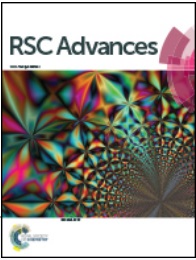ZnO:Er3+–Yb3+@Gd2O3 nanostructures were obtained by “wet” chemistry methods – the sol–gel technique for the preparation of ZnO and ZnO:Er3+–Yb3+ nanoparticles (NPs), and the seed deposition method for obtaining Gd2O3. The crystal structure, morphology, phase and elemental composition, resonant microwave absorption of rare earth ions, point defects in the ZnO:Er3+–Yb3+@Gd2O3 crystal structure and up-conversion luminescence were investigated by X-ray diffraction (XRD), scanning electron microscopy (SEM) with energy dispersive X-ray (EDX), X-ray photoelectron spectroscopy (XPS), electron paramagnetic resonance (EPR) spectroscopy, and optical spectroscopy. The crystallization temperature (600 °C) of the Gd2O3 phase on the ZnO surface was found. As-obtained ZnO:Er3+–Yb3+ NPs (with size ∼7 nm) are highly crystalline and monodispersed. ZnO:Er3+–Yb3+ NPs annealing at 900 °C leads to the formation of highly polydispersed ZnO:Er3+–Yb3+ NPs, covered by a Gd2O3 shell. The process of the incorporation of the rare earth ions into the ZnO structure, as well as the effect of Gd2O3 content on the morphology and visible up-conversion (UC) luminescence in ZnO:Er3+–Yb3+ matrices were studied
